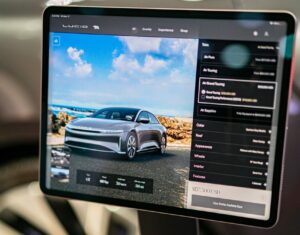
Home / EV Charging News / Innovations in Electric Car Charging Connectors and Compatibility Standards
The electric vehicle (EV) landscape is continuously evolving, with technological advancements enhancing every aspect of the charging experience. Central to these developments are the innovations in EV charging connectors and the standards that govern their compatibility. These components play a crucial role in ensuring that EVs are not only convenient for consumers but also interoperable across different charging networks and geographies.
Recent years have seen significant innovations in charging connector technology, which aim to make EV charging faster, safer, and more user-friendly. One of the notable advancements is the development of liquid-cooled connectors, which are capable of handling higher currents required for ultra-fast charging without overheating. This technology enables connectors to deliver power at a much faster rate, significantly reducing charging times and improving the user experience.
Another innovation is the advent of modular connectors. These connectors are designed to be more durable and easier to repair or replace, reducing maintenance costs and extending the lifespan of charging equipment. Additionally, smart connectors have emerged, equipped with data connectivity that allows for better integration with smart grid technologies. These smart connectors can communicate with the vehicle and charging station to optimize charging based on energy prices, grid demand, and vehicle requirements.
The role of compatibility standards is crucial in the EV charging ecosystem. Organizations like the Society of Automotive Engineers (SAE) and the International Electrotechnical Commission (IEC) develop and maintain these standards to ensure that charging systems are interoperable, safe, and efficient. These standards dictate everything from the physical design of connectors to the communication protocols they use, ensuring that an EV from one manufacturer can charge at a station built by another.
Compatibility standards also play a vital role in fostering widespread adoption of EVs. By standardizing key aspects of the charging process, they reduce the uncertainty for EV manufacturers and infrastructure providers, encouraging investment and development in the sector.
Despite the progress, standardization of EV charging connectors faces several challenges. The market is somewhat fragmented, with different manufacturers and regions favoring different standards. For example, while much of Europe has adopted the Type 2 connector as the standard, North America has a mix of CCS and CHAdeMO connectors in use. This fragmentation can be a barrier to the seamless use of EVs, as drivers may require special adapters or may find it difficult to access compatible charging stations while traveling.
Another challenge is keeping pace with rapid technological advancements. As new charging technologies emerge, standards need to be updated or revised to accommodate them, a process that can be slow and contentious among stakeholders with competing interests.
Looking to the future, several trends are poised to shape the EV charging connector market. One significant trend is the move towards universal connectors that can be used across different makes and models of EVs, potentially even on a global scale. This would greatly simplify the charging process for users and help unify the global market.
Automated charging systems are another area of development, where the charging process is completely automated. Such systems could use robotic mechanisms to connect the EV to the charger, optimizing the connection process and reducing wear and tear on connectors.
Innovations in EV charging connectors and compatibility standards are critical to the ongoing growth and acceptance of electric vehicles. By ensuring that charging technology keeps pace with the needs of modern EVs, these innovations not only enhance the user experience but also support the integration of EVs into the broader ecosystem of sustainable transportation. As the industry continues to evolve, the focus on interoperability and ease of use will remain paramount in driving the success of electric mobility.
$4,150.00 Original price was: $4,150.00.$3,990.00Current price is: $3,990.00.
$10,690.00 – $11,390.00

Your Power Management Partner for Over 25 Years Future Generations Depend on Our Decisions Today ™
2024 © All rights reserved by CyberSwitching